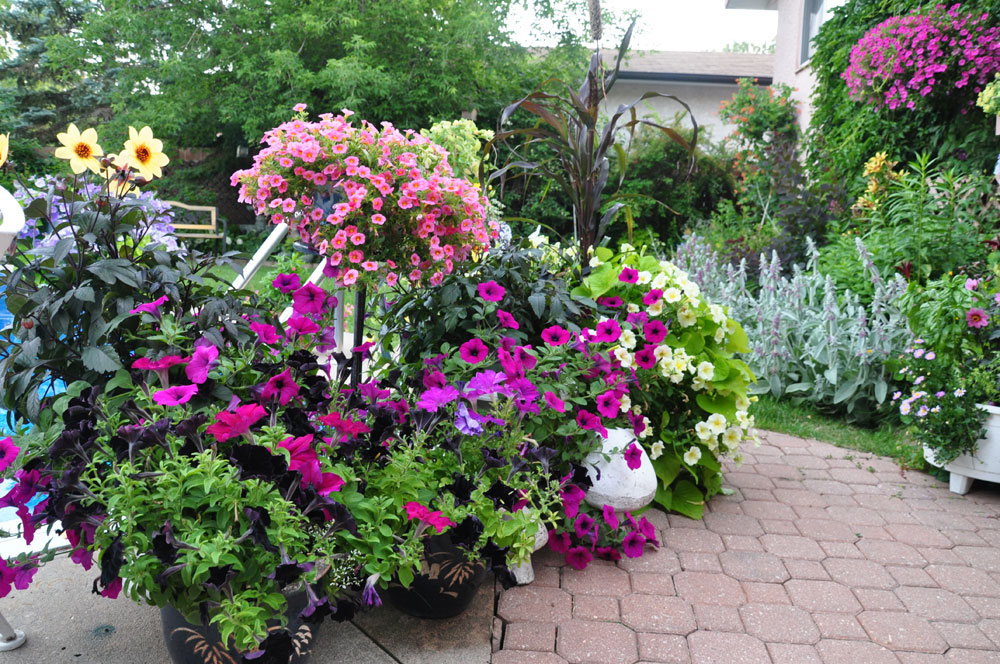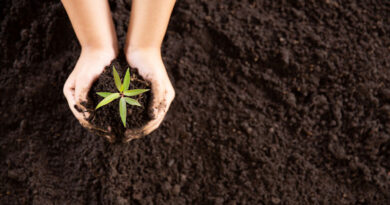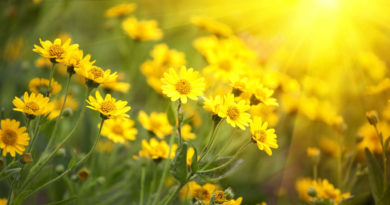9 Common Gardening Mistakes
Think about the planning, hunting, planting and cultivating we undertake each year in our quest for an exemplary garden. Yet with all that we sometimes fall short just because we’ve failed to take a few precautions to protect our garden or go the extra step that would display our flair. Here are some common mistakes gardeners make.
1. Planting containers too sparsely.
Most pots, baskets and window boxes are boring. Get out the shoehorn. Start out with your favourite plants, then punch up the impact with these elements: height (dracaena, fennel, purple millet), trailers (ivy, creeping jenny, variegated creeping charlie) and fillers that are silver (dusty miller), blue (lobelia, pansies), white (lobelia, verbena, alyssum, impatiens) and black (pansies). To embolden everything, add the black-eyed susan vine (Thunbergia). For extra impact and scent, poke in several bulbs of dwarf oriental lilies. For a quick snack, add a couple of strawberry plants.
Stop when you’ve rubbed your fingers raw squeezing plants into every tiny space.
2. Not planning in the spring for fall and winter.
When frost wipes out your impatiens, marigolds, coleus, canna lilies, zinnias, and begonias, will your garden have continuing interest? Plant lots of frost-survivors and late bloomers – petunias, gazanias, lobelia, calendula, garlic chives, dwarf hollyhock, snapdragons, dusty miller, alyssum, spikes, violas and pansies, and Sedum ‘Autumn Joy’.
And what will cheer you up after the first snowfall? Ornamental cabbage and kale, ornamental grasses, bright red branches of dogwood shrubs.
3. Bagging and disposing of grass clippings.
This is one of the stupidest practices going. Grass clippings add nutrition to your lawn. If you don’t like to leave long clippings behind, get a mulch mower or mow over the same clippings a couple times to chop them up. Or mow more often.
4. Fertilizing heavily at the wrongtime.
You don’t fertilize to get a plant growing. You fertilize heavily and frequently when your plants are growing quickly: in mid-summer. That’s when you’ll notice the leaves of some plants such as petunias starting to yellow. Add more nitrogen-based fertilizers such as blood meal.
5. Not paying attention to plant origins.
The easiest lesson in caring for a plant comes from learning where it originated. Did it originate in a meadow or on the plains? Did it come from a rain forest or close to a desert? Most lilies, for example, originated in rocky, gritty slopes so it’s no wonder ours get diseases or don’t proliferate freely if we plant them in wet, sticky soil. Ask your nursery about a plant’s or consult the Internet.
6. Not composting, because it’s been made to sound complicated.
It’s not. You don’t need a bin or a complicated routine. Instead of the garbage can, throw organic kitchen wastes, leaves, etc. into a pile in an out-of-the-way place in your yard. That’s it. Without any extra help from you, it will turn into a nutritious feast for containers, lawn or garden. In the winter, bag up kitchen wastes, tuck the bags somewhere out of sight to be added to the pile in the spring.
Feel guilty if you don’t compost orange peels, banana peels, potato peels, coffee grounds, tea leaves, egg shells, paper, cardboard, hair, and shredded cotton T-shirts and underwear.
7. Neglecting to plant tasty treats.
There’s always room just outside our door for a few raspberry canes, strawberries, a potato plant or two (sweet baby potatoes microwaved for a couple minutes are delicious), peas, cherry tomatoes, chives.
8. Not being ready for the plague of locusts.
Okay, so we don’t get locusts, but we do get nasty critters hell-bent on defacing our Eden. Being ready for them is half the battle. Have four organic things on hand: seaweed (spray on plants to make them so healthy that pests go elsewhere), diatomaceous earth (sharp “dust” slices up soft bodies of slugs, ants, etc.), rotenone (dust kills caterpillars and other defoliators) and baking soda (a teaspoon to a litre of water and a drop of detergent sprayed on leaves at first sign of blackspot and mildew keeps it from spreading).
9. Feeding our plants but not the soil.
Most store-bought fertilizers are inorganic and don’t restore the nutrients taken from the soil. What fertilizers are organic and can feed the soil, too? Look for Turkey Trot and sheep, thoroughbred and mushroom manure. And, of course, gardeners’ gold: that rich compost you’re making out of biodegradable wastes.
Don’t go looking for gardening rules. There aren’t any, though it’s a fact that all plants need light, water and nutrition. If you want to grow corn and pumpkins on your roof, go ahead. I grow hens and chicks in a hanging bag usually used for impatiens and plant black-eyed susan vines to twine among my tomatoes – and visitors say “Wow.” You, too, are going to harvest some “Wows”.





Pingback: Gardening Magazines Canada – House Design